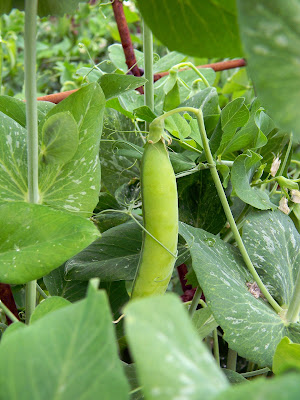Vegetables have been grown successfully in desert climates for many years. This is often a great surprise for gardeners that are new to the desert. Soil preparation is very important in producing crops here. For the home gardener a few basic rules apply:
- Don’t try to garden in caliche or hard-pack clay! If you have an impermeable layer near the surface, build raised beds and fill them with a mixture of native soil and bagged organic material like Dr. Q’s Paydirt™ Planting Mix, or if you plan a larger garden try our pre-mixed landscape soil.
- Use the right fertilizers for what you’re trying to grow. Leaf crops need lots of nitrogen; root and fruit crops like carrots and peas need less nitrogen and more phosphorus and potassium. A Star Nursery sales associate can help you pick the right fertilizer. A good choice is Dr. Q’s® Tomato & Vegetable Food.
- When amending vegetable beds, a mix of no more than one-half organic material to the native soil will suffice. To keep the soil fresh and viable, add more organic material each time you plant a new crop. Add Dr. Q’s® Gold Dust Starter Fertilizer, according to package directions, a day or so before planting.
- Surface mulches help prevent weeds, conserve water and protect plant roots. Cedar Mulch will repel insects without the use of pesticides. Use them generously.
- Pests can often be controlled by hand and sprays of water from the hose. The biggest pest in winter vegetable gardens, besides aphids, is usually the cabbage looper, which can be safely controlled with organic sprays like Spinosad ® or equivalent bacillus thuringensis (BT) product. ALWAYS FOLLOW LABEL DIRECTIONS.
- If your vegetable bed will be used again in the spring and summer, you may want to plan for some afternoon shade.
Here are some of the Vegetables For The Cool Season:
Beets (Dec through Jan– seed): Prefers sandy soil. Plant regularly for long harvest season. Harvest young; older beets tend to be woody.
Broccoli (Sep—seed; Oct thru Feb–transplants): Easy to grow; side shoots continue to produce long after the main head is harvested. Recovers well from extremely cold weather.
Brussels Sprouts (Sep-seed; Oct-transplants): Larger plant prefers good drainage. Pick cabbage-like heads when smaller than a golf ball. A single plant may yield 50-100 sprouts.
Cabbage & Kale (Sep to Nov—seed, and transplants):
Carrots (Sep.; Feb to May—seed): Choose short varieties unless you have excellent soil a foot or deeper, otherwise carrots will be distorted and stunted. Plant them often for fresh crops and harvest when young for best flavor.
Cauliflower (Late July-seed; Feb, Oct-transplants): Similar to broccoli. Use large leaves at the base to cover over developing head to keep it white, or it will mature purple or green (but still tasty).
Collards & Mustard (All year—seed/ transplants): Different plants with similar appearance, taste, and culture. Choose “hot weather” varieties if available.
Lettuce (All year–seed/transplants): Leaf lettuce, like Black Seeded Simpson and Romaine, can be grown all year. Head lettuce can only be grown in the cooler parts of the year and is more difficult. Plant every two weeks for a good, regular crop–favorite food of loopers, snails, quail and neighborhood cats…
Onions, Dry (Oct to Mar–seed or sets): Thin early; harvest next year after the tops wither.
Onions, Green (Sep to June–seed or sets): Easy from sets; plant regularly for a continual crop of young, sweet onions.
Peas (Nov; Feb—seed): Bush varieties are much easier to deal with. Try snap and sugar hybrids and choose heat resistant varieties if available. Prefer rich soil with excellent drainage.
Radish (All Year—seed): Gets pithy and hot fast, especially in poor soil. Plant small quantities every two weeks for a regular supply. Enrich soil for sweetest, mildest radishes.
Spinach (Sep to Oct; Feb—seed): Thin plants to 6 inches apart. Feed once during the season. Cut off at ground level to harvest, avoiding the extra grit that comes from pulling up the whole plant.
Tomato (Aug to Sep—transplants): Made possible by long desert growing season. Plant fast developing varieties like Early Girl for a late fall crop. May need to harvest green in late October or early November to prevent frost damage. Wrap in paper and store at room temperature. Will keep through most of the winter. Place in kitchen window when you want them—they’ll ripen in a few days.
Turnips & Rutabagas (Aug to Oct; Feb—seed): Grow turnips for a relatively quick crop; rutabagas if you want to store them. Both have tasty greens which can be sparingly harvested without hurting the developing bulb.
For More Information On Growing Cool Season Vegetables, Check Out Star Note #200.


































